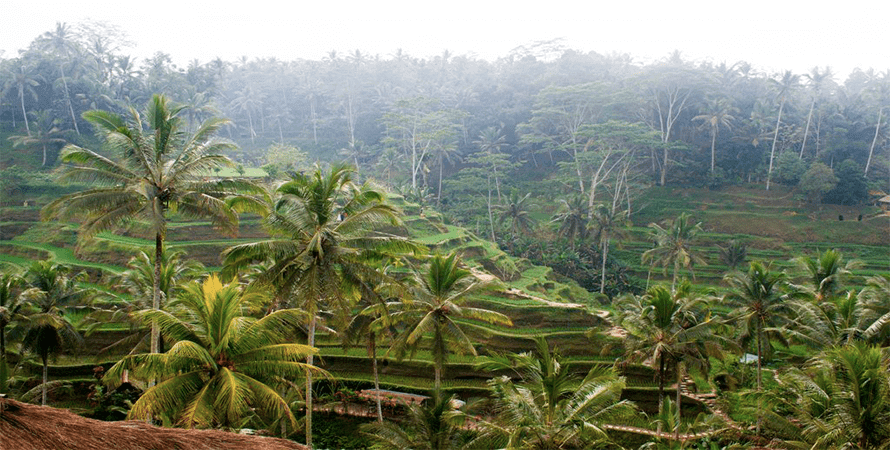Vietnam, Thailand, and Indonesia are expert rice growers, however the feature that stands out in Bali is the inappropriateness of its relief for this type of planting.
Rice fields in Bali
Rice cultivation in Bali dates back to Neolithic times but the steep mountains of Bali and the deep falls make wet rice farming difficult.the natives developed an intricate system of terraced cultivation, irrigated by a subak (water distribution community).
The Balinese create that Dewi Sri , la < strong > goddess del rice , < / strong > must be honest and by this is that that establish sanctuaries in each sawah ( rice field ) . The Balinese create that Dewi Sri inhabits in each stem from rice and < strong > during the harvest the women use a small ñ or knife curved . < / strong > Lo carry hidden in the palm of its hand and van cutting only some stems with each cut to not scare to Dewi Sri .

The best rice fields on the island of the gods
On the road leading north from Ubud to Pujung is Tegallalang certainly one of the rice fields of Bali. The best view in Bali, is in the valley located in a stretch of one kilometer along the road.you will know when you have arrived at this place by the many cars and tour buses that are parked at the side of the road. You will find craft shops and some street vendors who sometimes disturb the tourists who only come to admire the landscape.
Located in the Tabanan region, Jataluwih is the most striking example of terraced agriculture in the world. The road north from Tabanan to Jataluwih takes you through some of the most famous views of the rice fields on the island. It is, without a doubt, Bali’s oldest and most complex example of the rice terrace agricultural system. Located in various locations along the road, you will find small restaurants to sit and watch the splendor. In several shops you will find jars of spices and nuts that you can take with you to practice Bali’s gastronomy at home.

There is a place on the east coast of the island that is not much visited by regular tourists which is the most impressive and beautiful panoramic view of Bali’s rice fields. A place called Ngis, a small village barely visible from the main road. in this village the women sing while working in the rice fields and the men dance fertility dances to improve the production.
By this same road, if you travel to Amlapura you must head north, and from there go down to the village of Abang, just between these two places, you will reach a sharp bend in the road and here you will find a heavenly view.», « The best time to really appreciate this impressive panorama is in the late afternoon and it is an ideal time to take pictures here, don’t miss the opportunity.
The tradition of rice cultivation is, in Bali, part of the way of life, passed down from generation to generation to sustain the survival of every Balinese family.
Rice fields on the island of the gods
Visitors to Bali have a wealth of places and attractions to visit far from the noise of shopping and traditional festivals.Bali is famous for its numerous temples and other places of worship, however, wherever visitors go to the countryside on day trips. It is inevitable that they see the rice terraces that adorn the faces of the hills and mountains, the higher you go on the island, the more spectacular the rice terraces. These terraces are a classic feature in the Bali landscape and are rice cultivation on different levels that follow the natural contours of the escarpments.
Water-filled terraces, lush with rice grass, bordered by the jungle with palm and banana trees, which make magic on the roads of Bali. Rice cultivation is perhaps the most important productive and cultural element on the island. The traditional way of cultivating rice is very different in Bali from modern agriculture in developed countries. This is reflected in everything from the process of cultivating the land to the methods of planting and harvesting.

Before cultivating the land in Bali, the farmers first hold a meeting, called locally .rapat subak, The Subak is a traditional farmers’ organization, responsible for irrigation, and the members are the farmers who own the fields. The next step is to plow the rice fields, with a traditional plow pulled by two trained buffaloes.
It is time for to take your camera and photograph this whole process. Among so many Bali rice fields it is difficult to choose which one to visit equally near any walk or guided tour you may observe, however I will suggest some that will make you delirious.


